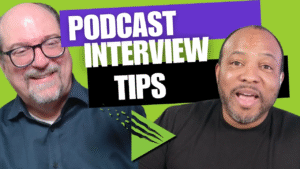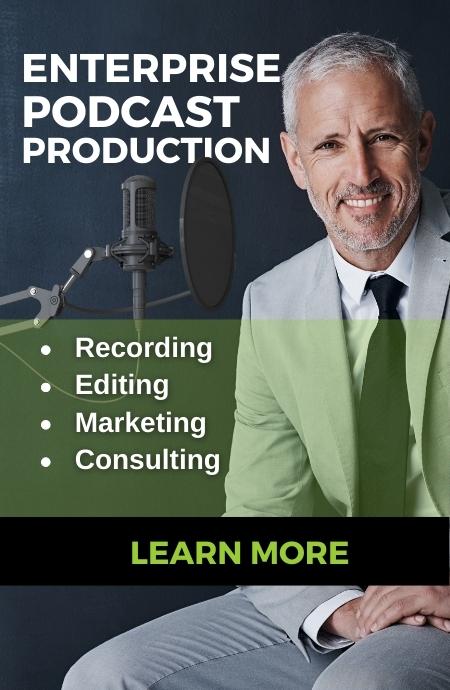Updated for 2020
Content Marketing is quickly becoming the largest and most important part of marketing and having a firm grasp of these concepts will get you off to a solid start. For effective Content Marketing, here are the 10 things you must consider.
1. Written Content Ready for Voice Search
We are all becoming accustomed to talking to devices. We’re talking to our homes, we’re talking to appliances, but one of the most common activities is asking questions. The internet of things is now a conversation.
When you create your content, you want to make sure that content has something for the robots to understand and respond to. For example: Instead of creating content with a title like, “The Dirtiest Part of Your House – the Sink” you would be better giving a more direct answer in your title like “How to Clean a Sink – 5 Easy Steps”. Because someone’s going to say “Hey Alexa, how do I clean my sink?”
And if your a blog article is “How to clean a sink?” you have greater odds of having that answer spoken back to you. Amazon, Google, and other search engines will pick up on “How” “Sink”, “Clean”, and “Steps” to choose your content as the answer.
Optimize your content for voice search. Do some tests. Ask those devices about your solution that you provide, see what the answers are, and then you can fill in the gaps with what it cannot answer. If you ask your device about your solution and it cannot answer it, that’s the time to rush out right now and create content to answer that question through voice.
2. Content That Tells a Story
Because of it’s proven effectiveness, storytelling is a part of nearly every content conversation. However, many people miss the mark by not understanding the nuances and formulas to tell a good story. At a high level, stories must be:
- True
- Relatable to the audience
- Have a format or formula – There are many but the classic “Intro, Build-up, Problem, Resolution, Ending” is a solid start.
Anne Handley gives some excellent advice on storytelling for businesses and why so many get it wrong in her book Everybody Writes. I highly recommend this book for anyone struggling with storytelling for business or making effective “non-markety” marketing content.
You can also find several podcast episodes on The Business of Content that discuss how to tell a good story.
3. Video
Video is the content gift that keeps on giving. It educates, inspires, builds trust, and conveys a personal touch to business communication. No other form of content can serve as well as a content pillar than video. Video can be transcribed into long-form text such as white papers and blogs.
It can be shortened into various lengths and formats and combined with other videos to create new video. The audio can be extracted for use in podcasts.
And short versions of all of the above can be utilized for native social media posts. Video is the queen (or king) of all types of content right now. At this point in the game, if you don’t have video, you will be left behind.
There are many types of video that are proven to drive business. Start with learning which type of video works best for your business and the formulate a strategy to get the greatest ROI from your video content.
The most proven types of video content for business are:
- Live Motion Demonstrations
- Screen Captures (key for software companies)
- Animations
- Customer Testimonials
- Thought Leadership
- Training
- Humor (for the fastest of human connection, even for business)
4. Have a Repurposing Strategy
If you create some content, don’t just put it out there and let it die. As mentioned in the video section, just because you have content in one format doesn’t mean that this is the only format that the content should always be. Get the most ROI from your content by repurposing it.
Remix it! If it’s video, it needs to become written. When it is written content, it needs to become video. What starts with video can become a podcast. If it is a podcast, it needs to become text.
Long-form content can become short-form content. If it’s square, maybe it becomes vertical and if it’s horizontal, make it square. Repurpose and Remix your content.
[Not by Coincidence: This piece of content was generated from a podcast episode.]
This does not mean just re-plaster it everywhere. Repurpose it for the format or the medium you’re going to put it on, consider placing it on each platform and social channel that makes sense for your brand, but consider the available resources that you have to do so.
Be sure also to focus on repurposing your content not just where you ‘think’ it should be, but make sure your content is everywhere your audience lives online. Which brings us to our next item…
5. Decide on your Platform
Some have previously advised brands to attempt to be present on every platform possible. Then, we reached a point where there are so many platforms, it’s not feasible for most business or individuals.
It can even be costly. Content production companies like Content Monsta help companies create content to cover as many bases as possible, but even then, I still say that you need to have your champion platform.
What is a champion platform? A champion platform is that content distribution medium (social or otherwise) that is the single most effective platform for distributing your content. This platform is where the majority of your audience spends their time and this platform has given you some or better yet, Proven results.
In other words, you need to know what your number one platform is for developing your business, whether it be LinkedIn or Facebook or Instagram. Do the others, but know what your champion is and make sure you go the deepest on that one. Once you master going deep on that platform, utilize your remaining resources to go wide on the others.
Here are some things to take into consideration for choosing your champion platform:
- Whether you are B2B or B2C
- Do you already have an engaged audience on a particular platform
- Does the platform demographic match your target audience
- Are you able to create the content that works best on that platform (Products and Personal services work great on image-focused sites (Instagram and Facebook) B2B services work better on LinkedIn?
- Do they have the resources to cover more platforms? (Do you have a content production partner or internal resources, then they absolutely should look at additional platforms. But they need to do it correctly and not waste their time)
6. Make a Plan to Listen
Do some social listening. Social listening typically refers to paying attention to the social channels that mean the most for your brand while looking for feedback or for opportunities to jump in and contribute. You can also take it offline to do some in-person listening and ask questions while networking in person.
Whether online or off, listen for customer feedback because the best content comes from understanding your customer. Without listening you will eventually come to a roadblock and have the challenge of trying to figure out how to find the right content to make for your audience. Listen before you plan content, and realize that having a plan to listen is the beginning.
7. Automation
Automation can help you maintain a presence across your content distribution channels. It can make sure that while you’re sleeping, you are still posting content. You can also test with automation.
For example, we know that YouTube embeds don’t do well in LinkedIn, because like most social channels anything that links out and away from the platform is going to get squashed by the algorithm. Since you cannot schedule native video posts, we decided to use automation to test YouTube embed in time zones where we were not awake to make posts.
The result was that we got responses from people in different time zones who would have never seen it in the first place. As expected, the response was lower than native posts, however, it was a new audience that we would have otherwise never reached. And that’s a win.
We can’t mention automation without giving caution, however. With the blessing of automation comes much responsibility. If you abuse automation or have an addictive response to getting more, more, more – eventually that abuse of the blessings will backfire.
Use it to increase your production, but be cautious of venturing too far from the human touch and never stop engaging using real human interaction. Failure to do so will kill your results in the end. There is no true shortcut to real human engagement.
8. Capture Content as it Happens
The best content is life as it happens. The success of reality TV (that we thought was a fad) turns out to be a play on basic human nature to be curious about other’s lives. This fact supports the concept of documenting versus creating, a tactic publicized tremendously by entrepreneur Gary Vaynerchuk.
Whether you are an executive, public speaker, or simply an expert in what you do, capture your activities as content. Capture yourself in action, speaking, talking to customers. Capture customers using your product or service.
When it’s possible to capture those interactions, those moments, they will definitely serve to tell your story and bring your new customers closer to you and give them a closer understanding of what you do. It gives them an authentic picture of who they are doing business with. In today’s consumer driving marketplace that matters.
Documentation will allow you to increase your visibility while churning out authentic content at a rate that solely focusing on creation cannot do. Cement your brand by showing up often and open. After all, if you don’t exist on the web, then digitally your brand doesn’t exist. In short, Document. Don’t create.
9. Engagement
It is critical that you plan some time to engage with your audience. As we mentioned in the section about automation, it is not enough to simply push out content to the world and not look back.
It is equally important to engage by both listening and participating. Listening is being there to see what they’re talking about. Engaging is actually getting in there and having those conversations with your potential customers.
Often when engagement is mentioned regarding social content, the topic is self-centered around “How to Get More Engagement on Your Content.” The part that is less discussed is taking the effort to engage with other’s content.
There are two benefits to doing this:
- You’ll be seen by others who are viewing the content. This often leads to views of your profiles, follows, and conversations started.
- The algorithm of social platforms like LinkedIn actually rewards engagement over smaller actions like “Likes” or even “Shares”. It takes more effort to engage and fortunately the rewards are worth it.
10. Develop a Content Marketing Strategy
Now that you have your checklist it is time to put it in action. But don’t just throw your time or wallet at any of these without a content marketing strategy. Lack of strategy is why marketers find themselves pulling their hair out trying to uncover ROI, results, and direction on where to take their content marketing efforts next.
Look at each of the items and create a strategy on how to approach them. Many of the items in the checklist themselves are strategies that can be applied to other items; like applying Repurposing to Video.
When beginning to develop a content marketing strategy, start with clearly establishing what it is you are trying to accomplish. Is it more brand awareness? It is more awareness of a particular product or service?
Is it to directly drive sales? (Caution with that one, because as we stated before, Content Marketing serves best by providing indirect results). Are you looking to generate leads, or perhaps just more traffic to your website? Know why you are marketing with content before you start content marketing.
There are several key items that your content strategy should include. These include your business case, your target audience, your brand story, and your distribution plan.
Share this strategy with your company or marketing team members to develop the best approach and make sure that you cover all points needed as well as resources available. After launching your content marketing strategy it is still a good idea to revisit it often to review, revise, and possibly even redirect.
There you have it, your 2020 Content Marketing Checklist. We hope that these get you off to a great start in your marketing efforts. Check back for updates and learn more about content marketing tactics at www.ContentMonsta.com
- The Three L’s Every Podcast Host Needs: Listen, Learn, and LeadToo many new podcast hosts make the mistake of scripting every word – missing the heart of what makes podcasts work: real, unscripted conversation. This article explores how the best shows are built on curiosity, not checklists. Learn why Content Monsta’s producers say to ditch the pre-interview, bring just a few strong questions, and focus on the three L’s: Listen, Learn, Lead.
- How to Build a Revenue Machine by Aligning Sales and Marketing with Bruce ScheerBruce Scheer, author of Inspire Your Buyers, breaks down how sales and marketing misalignment kills deals in the final 30% of the buying process – and how a unified value narrative can transform your go-to-market strategy.
- Designing a Winning Podcast Structure: Lessons from Behind the ScenesIf your podcast or video content isn’t landing, structure may be the problem. At Content Monsta, we’ve learned that leading with a strong hook, cutting the fluff, and mapping out every element – from intros to promos – keeps audiences engaged and improves results. Here’s how to structure your content for maximum impact.





